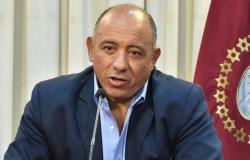The Russian nuclear-powered submarine Kazan has already arrived at the port of Havana along with a missile frigate. The Kremlin’s risky maneuver in the Caribbean could be a response to US support for Ukraine. The White House is monitoring the situation but does not consider it a threat.
ADVERTISING
The echoes of the cold war seem to ring again on the paradisiacal island of Cuba, to whose waters a flotilla of Russian Navy ships has already arrived. The boats are expected to remain until June 17which has caused the United States and Canada to mobilize their vessels in the area, according to ‘Newsweek’.
Military vessels flying the St. Andrew’s flag (the flag of the Russian navy) are being closely watched by the US Navyespecially interested in getting a closer look at the military capacity of the rival fleet, and at the possibility that the maneuver is a Russian response to Ukraine’s authorization of the use of American weapons inside Russia.
The group is made up of two crown jewels of the Russian Navy: the cruise missile submarine Kazanof nuclear propulsion and Yasen class, and the missile frigate Russian Admiral Gorshkov. The two maritime combat units are supported by a pair of auxiliary vessels, a tanker and a rescue tug.
War games under the Caribbean sun
On the way to Cuba the ships have been carrying out exercises “about him use of precision missile weapons in it Atlantic Ocean” along the journey, announced the Commander in Chief of the Russian Navy, Alexander Moiseyev.
On the route to Cuba, Russian sailors have shown their naval military power.
This return of the Russian military presence to Cuba has been well received by the Havana regime after years of isolationsince the last days of the Soviet Union in 1989, when the last visit to the island of a Soviet leader, Mikhail Gorbachev, occurred.
“During the exercise the crews of the frigate and the nuclear-powered submarine have been practicing he use of high precision missiles through computer modeling against maritime targetswhich indicate groups of ships of the conditional enemy and are located at a distance of more than 600 kilometers,” Moiseyev added.
According to sources from the Russian Ministry of Defense “the ships have passed a few dozen kilometers off the coast of Florida.” The spokesman for the White HouseJohn Kirby, previously stated that The US was monitoring the situation regarding the visit of Russian Navy ships to Cuba, but that “I didn’t consider her a threat. for its national security.”
Cuba assures that the Russian presence does not pose any threat to the region
The US Navy has followed in the wake of the nuclear submarine with the P-8 Poseidon ‘submarine hunter’ aircraft.
The Cuban Foreign Ministry said that the Russian warships will remain in Havana until June 17, noting that none of them will carry nuclear weapons and ensuring that Their presence “does not represent a threat to the region”.
The Cuban press affirms that the visit is related to the historic friendly relationship between both countries. During their stay, the Russian sailors will carry out various activities, as courtesy visits to the Chief of the Revolutionary War Navy and the Governor of Havana. In addition, they will visit places of historical and cultural interest.
Cubans want avoid any parallels with the Cuban missile crisis 1962, when the Soviet attempt to deploy nuclear warheads in Cuba put the world on the brink of World War III.
It is not the first time that Russia has sent its warships to the Caribbean, but the visit occurred after the Putin’s warning that Moscow could respond to the decision by Ukraine’s Western allies to allow kyiv to use its weapons to attack targets in Russia by providing similar weapons to Western adversaries around the world.
In the midst of tensions between NATO and Russia and the Kremlin’s maneuvers with Belarus with nuclear weapons, the small Latin American country once again gains special importance in the geopolitical board. If in 1962, in the midst of the Cold War, the island was the protagonist of one of the largest diplomatic conflicts in the contemporary world as a result of the missile crisis, now the country led by Díaz Cañel exhibits a strengthening of its ties with Putin’s Russia.
The Russian naval mission also responds to the Russian political approach to the countries of the Global South, where it wants to demonstrate its military power. And it supposes, in turn, a diplomatic maneuver with which to project force, given that the Kremlin is interested display your naval power after the blows inflicted by Ukrainian seaplanes on the Black Sea Fleet.






